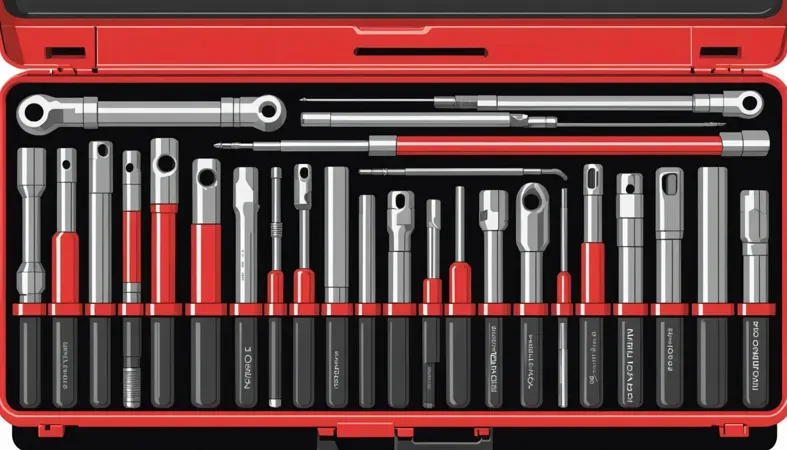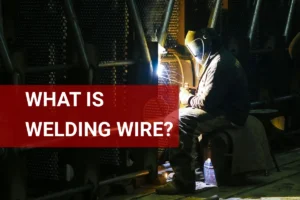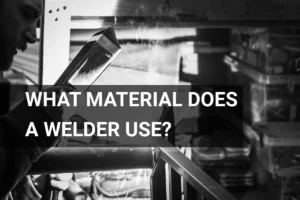How to Store Welding Rods? Tips, Methods, Safety, and Benefits
Published on: June 4, 2025 | Last modified: March 4, 2025
By: Joe Carter
Welding rods are metal rods used in the welding process to create a strong bond between metal pieces. They melt and fuse during welding, forming a joint that holds everything together.
One question I get asked a lot is how to store welding rods. Proper storage matters because it helps maintain the quality and usability of the rods. In my experience, poorly stored rods can absorb moisture, leading to defects in your welds.
In this guide, you’ll learn how to store welding rods, types of welding rods and their uses, steps for proper storage, safety tips, common problems to be aware of, and more. You will also discover how a welding rod oven can help keep them dry. Don’t miss any of this important info!
Contents
- How to Store Welding Rods?
- What Are Welding Rods?
- Types Of Welding Rods and Their Uses
- Prerequisites
- Safety Tips
- Steps to Store Welding Rods Properly
- Types Of Storage Methods for Welding Rods
- Factors Affecting Welding Rod Storage
- Choosing the Right Storage Conditions for Welding Rods
- Typical Problems to Be Aware Of
- Key Benefits Of Properly Storing Welding Rods
- Applications You Should Know About
- When to Try a Different Approach
- Frequently Asked Questions (FAQs)
- Conclusion
- References
How to Store Welding Rods?
Welding rods are consumable electrodes for fusion welding. To store welding rods, keep them in a dry, temperature-controlled area below 30°C (86°F). Improper storage leads to moisture absorption, affecting weld quality. It’s crucial for shielded metal arc welding.
What Are Welding Rods?
Welding rods are essential tools in metalworking. They’re metal wires coated in flux, used to join two pieces of metal. The most common types include mild steel, stainless steel, and cast iron rods, with diameters usually ranging from 1.6 mm to 6.4 mm (1/16 Inch to 1/4 Inch). Rods are classified by specifications, like E6011 or E7018, indicating properties such as tensile strength and welding position.
Storing welding rods can be tricky. You should keep them dry to ensure they function properly during welding. Poor storage can lead to moisture buildup, causing rods to stick while welding. It’s surprising how simple storage affects your results!
Using a welding rod oven for my last project was super helpful. I struggled to keep my rods dry. Learning to maintain a temperature around 120°C (248°F) preserved their quality, making my welds smoother and more effective. Investing in the right storage method is worth it!
Types Of Welding Rods and Their Uses
Electrode Welding Rods
Electrode welding rods create an electric arc. Store them in a sealed container to prevent moisture damage, which can reduce their effectiveness.
MIG Welding Rods
MIG welding rods allow for fast, continuous welds. Keep them in a dry area away from dust. A welding rod storage container works well for this.
TIG Welding Rods
TIG welding rods are thin and excellent for precision welding. Maintain a consistent environment for proper storage and reseal after each use. A vacuum-packed electrode storage is ideal.
Flux-cored Welding Rods
Flux-cored rods are ideal for outdoor welding tasks. To prevent rust, keep them in a tightly closed box. Using a welding rod oven is wise to dry them out before use if necessary.
Nickel Welding Rods
Nickel rods are suitable for welding nickel alloys. Store them in a cool, dry place to prevent degradation. A welding rod storage tube helps keep them organized.
You should now have a good understanding of the various welding rods and their applications. In the next part, we’ll discuss necessary requirements.

Prerequisites
What do you need to store welding rods?
- Welding Rod Storage Container: You need a container, like the Lincoln Electric 6 in (15.2 Cm) x 12 in (30.5 Cm) storage box, to keep your rods dust-free and organized.
- Desiccant Packs: Silica gel packs that absorb moisture are essential. For example, packs rated for 300 g (10.6 Oz) maintain dry conditions inside your storage.
- Welding Rod Oven: A specialized oven, such as the Miller Electric XMT 350, is necessary for low-hydrogen rods. This keeps your electrodes in proper condition.
- Quality Vacuum Seal Bags: Use bags like FoodSaver 1-Gallon for storage. They prevent moisture damage by sealing your rods securely.
We have now covered the necessary prerequisites. Next, we will examine important safety tips.
Safety Tips
Let’s quickly explore vital precautions for storing welding rods.
- Keep Dry: Moisture can ruin welding rods. Use desiccants (Moisture-absorbing Agents) like silica gel packets.
- Label Containers: Clearly label your welding rod storage to avoid confusion and prevent mix-ups that complicate your work.
- Temperature Control: Store rods at a stable temperature of 21°C (70°F) for optimal performance. Use climate-controlled storage when necessary.
- Shelving Elevation: Always store welding rods off the ground. Use shelves or pallets to prevent rust and dirt buildup.
Following these precautions helps maintain quality and keeps you safe while working!
We have now covered safety precautions and best practices. Next, we will examine effective methods for storing welding rods properly.
Steps to Store Welding Rods Properly
Now, we’ll cover steps for effectively storing your welding rods to maintain quality and usability.
Choose a Storage Container
Start by selecting an airtight, moisture-proof container for your welding rods. Options include a specialized welding rod oven or a sealed bucket. Make sure it’s large enough for your rods; typically, a diameter of 7 inches (18 Cm) works for most standard sizes.
Once you’ve got your container, arrange your welding rods vertically to avoid bending. I found that using a vacuum-sealed bag inside the container helps keep moisture away. This way, your rods stay dry and in shape! When working with intricate materials, mastering the technique of welding thin metal can be invaluable.
Control Humidity Levels
Maintaining controlled humidity is key. Ideally, store welding rods where humidity is below 60%. In high-humidity areas, place a silica gel packet in the container. This absorbent material can prevent corrosion and extend rod life.
If possible, monitor humidity with a hygrometer. I learned the hard way that moisture significantly affects rod performance! Keep your storage area away from damp places like basements or water sources.
Store Different Types Separately
Sort your welding rods by type. Low hydrogen electrodes should be kept in a dry area—ideally in an oven at around 250°F (121°C) if coated. Label your containers clearly to avoid mix-ups, which can weaken your welds. Seam welding is another important technique to understand, and you can explore more about what is seam welding to refine your welding skills.
When using any welding rod type, keep rods for similar applications together. Trust me, I’ve had issues by not doing this. Keeping everything organized reduced my setup time and improved my welding efficiency. For those tackling vertical welds, mastering the technique of welding uphill can significantly impact results.
Inspect Regularly
Regular inspections are important for the longevity of your rods. Check them every couple of months for signs of moisture or damage. If you notice rust or breakage, promptly discard them. I found that using compromised rods leads to weaker welds. Proper technique is crucial when working with different welding positions, especially if you’re learning how to weld vertical.
Re-dry any damp rods in a kitchen oven at around 300°F (149°C) for at least 30 minutes. This process removes moisture and potential contaminants. It’s a simple trick to keep your rods ready for use!
We covered how to store welding rods properly. Next, we will explore different storage methods for welding rods.
Types Of Storage Methods for Welding Rods
Let’s explore various ways to store welding rods, including sealed plastic containers, metal cabinets, desiccant-enhanced boxes, temperature-controlled storage, and magnetic holders.
Sealed Plastic Containers
Sealed plastic containers are ideal for storing welding rods. They protect rods from moisture, dust, and contamination. Make sure the container has a good seal to keep humidity below 50%—crucial for preventing rust and deterioration.
Metal Storage Cabinets
Metal storage cabinets offer a sturdy option for organizing welding rods. They’re durable and can withstand rough handling. Choose cabinets with ventilation holes to prevent heat buildup, ensuring rods stay in great shape. To fully understand what welding rods are made of, it’s essential to consider the materials involved in their creation.
Desiccant-enhanced Boxes
Desiccant-enhanced boxes contain moisture-absorbing materials like silica gel. This method is essential in humid areas. By keeping humidity low—sometimes below 30%—it ensures your rods remain dry.
Temperature-controlled Storage
Temperature-controlled storage is vital for certain rods that require a specific heat range. These environments maintain temperatures within 10°C (18°F) of the ideal storage temperature. After much trial and error, I’ve learned that stable temperatures preserve rod quality and prevent unwanted property changes.
Magnetic Holders
Magnetic holders are a convenient way to store lighter welding rods. They attach easily to any metal surface, providing quick access when needed. Just ensure they’re out of direct sunlight to avoid heat exposure.
Factors Affecting Welding Rod Storage
What factors impact the proper storage of these essential materials?
Humidity Levels
High humidity can cause welding rods, especially low-hydrogen types, to absorb moisture. For instance, electrodes like E7018 should be kept below 50% relative humidity to maintain their properties.
Temperature Variations
Extreme temperature changes can affect the usability of welding rods. Ideally, store them in a controlled environment between 15°C and 25°C (59°F and 77°F) to prevent adverse effects.
Type Of Welding Rod
Different rods require different handling. Low-hydrogen rods should be stored in a welding rod oven at approximately 150°C (302°F) to prevent moisture absorption. Follow specific guidelines for your rod type to maintain quality.
The intricacies of combining metal through heat and pressure require special techniques and one effective method used by experts is forge welding fundamentals.
Packaging Integrity
The original packaging provides crucial protection. Always check for rips or tears; compromised packaging can expose rods to moisture and contaminants.
Storage Duration
Use-by dates are important. Store rods in a cool, dry place and adhere to recommended storage times, as long-term storage increases the risk of contamination and deterioration.
Choosing the Right Storage Conditions for Welding Rods
Proper storage conditions are crucial for maintaining the quality of welding rods. Here’s what you need to know.
| Storage Factor | Ideal Conditions | Impact of Poor Conditions |
|---|---|---|
| Temperature | 15-25°C (59-77°F) | High temperatures can degrade rod coating; low can cause moisture issues. |
| Humidity | Below 60% | Excess moisture leads to rust and poor weld quality. |
| Light Exposure | Avoid direct sunlight | Can cause coating deterioration and increase heat absorption. |
| Physical Handling | Minimal movement | Frequent handling can lead to damage or contamination. |
| Air Quality | Dust-free environment | Dust and contaminants can cling to rods, affecting weld quality. |
Maintaining these ideal conditions can significantly enhance the lifespan and usability of your welding rods!
Typical Problems to Be Aware Of
Let’s look at the common issues that can affect welding rods.
Moisture Contamination
Welding rods can absorb moisture, leading to defects in the weld. Check for rust or a spongy feel. To resolve this, dry the rods in an oven at 120°C (250°F) for at least one hour.
Rod Warping
Welding rods may warp if stored improperly. Look for bends or twists. To prevent warping, store rods in a dry, flat area away from heat.
Corrosion Risks
Welding rods can corrode if exposed to moisture or chemicals. Inspect for discoloration and pits. If detected, clean them and consider replacing the rods.
Loss Of Coating Integrity
Welding rods may lose their protective coating. Check for flaking or peeling. To maintain coating integrity, store rods in an airtight container.
Accidental Damage
Welding rods can suffer physical damage from mishandling. Look for dents or chips. Store them securely in holders to avoid damage.
Key Benefits Of Properly Storing Welding Rods
The main benefit of storing welding rods correctly is preventing moisture damage. I found it very helpful for a project; my rods stayed dry and ready to use.
Additionally, properly stored rods extend their shelf life, maintain optimal performance, and reduce the risk of defects during welding. Plus, it saves you money in the long run by cutting down on waste. A dedicated storage space also keeps your workspace organized! Mastering welding techniques such as overhead welding can enhance your skill set, and you can learn more about how to weld overhead effectively.
Applications You Should Know About
I’ve seen people use specific storage solutions for welding rods to improve work quality. Here are some common uses:
- Rod Ovens: These maintain optimal temperatures (Typically Around 65°C or 150°F) for low-hydrogen rods, preventing moisture absorption. This method is popular in pipeline work.
- Moisture-Resistant Containers: Storing rods in hermetically sealed boxes protects them from humidity. This is a top choice in coastal areas where moisture can damage welding rods.
- Magnetic Strips: These are ideal for organizing and easily accessing rods. They work well in mobile welding setups, especially for on-site jobs.
- Climate-Controlled Storage: For shops that store rods long-term, this prevents exposure to temperature fluctuations, which is essential in fabrication shops that handle high-grade materials.

When to Try a Different Approach
Sometimes, going for alternative storage methods can be just as effective. For example, using a Welding Rod Oven can maintain optimal temperature and humidity, especially for low-hydrogen electrodes. After countless attempts and adjustments, I’ve figured out that products like the Lincoln Electric Welding Rod Storage Container work wonders in tough conditions.
You might also consider vacuum packing your welding rods. This method keeps moisture at bay without needing a specialized oven. Plus, simple techniques like drying welding rods in a kitchen oven can yield great results when you’re in a pinch. Always think outside the box!
Frequently Asked Questions (FAQs)
Now let us look at some common questions I typically get asked about welding rods.
How Can You Dry Welding Rods?
Yes, you can dry welding rods to improve performance. Drying helps remove moisture, which can lead to poor weld quality. For example, you can place rods in an oven at around 140°C (284°F) for at least an hour to ensure they’re dry and ready to use.
What is a Welding Rod Oven?
A welding rod oven is a device used to store and heat welding rods. It maintains a specific temperature to keep the rods dry. Typically, it operates around 120-150°C (248-302°F) to meet storage requirements for electrodes like the 7018. Understanding the numbers on a welding rod is essential for selecting the appropriate rod for your project, as these numbers indicate important specifications such as tensile strength and the position suitable for welding. To explore a more detailed explanation on what the numbers on a welding rod mean, refer to specialized resources that provide comprehensive insights.
How Do You Stop Welding Rods From Sticking?
You can stop welding rods from sticking by adjusting heat settings and technique. Using a smaller amperage ensures better control and penetration, which reduces sticking. For instance, a common setting for 1/8-inch (3.2 Mm) rods is about 90-125 amps. When welding galvanized steel, it’s crucial to be aware of potential health hazards like zinc fumes which can be harmful, so it’s vital to understand the risks involved when welding galvanized steel.
What Do You Do With Old Welding Rods?
You should dispose of old welding rods properly. Damaged or contaminated rods can compromise weld quality. Make sure to recycle or discard them by following local hazardous waste regulations, as metals can be harmful if not disposed of correctly.
How Do You Use Plastic Welding Rods?
Using plastic welding rods involves melting them at the joint area. Apply heat from a plastic welder to fuse them in place. For best results, choose compatible materials and follow the recommendations for temperature, usually around 200-300°C (392-572°F) depending on the type of plastic.
Conclusion
We’ve covered a lot about how to store welding rods. We discussed what welding rods are, their types, proper storage steps, safety tips, different storage methods, and factors affecting storage. Plus, we touched on typical problems, aftercare, benefits, applications, and when to try a different approach.
In short, storing welding rods correctly is crucial. Keep them dry in a clean environment, preferably above 90°F (32°C), and sealed if they’re low-hydrogen rods. By following these simple guidelines, you’ll keep your welding rods in top condition, ensuring great results. Wishing you success in your welding projects.
To stay informed about the latest updates and articles on welding, feel free to return to our homepage at What is Welding.
References
- Kalpakjian, S., & Schmid, S. R. (2014). Manufacturing Engineering and Technology (7th ed.). Upper Saddle River, NJ: Pearson.
Joe Carter is a retired welding professional with over 40 years of hands-on experience in the industry, spanning ship repair, structural welding, and even underwater projects. Joe is a master of MIG, TIG, and Stick welding. Passionate about mentoring the next generation of welders, Joe now shares his decades of expertise and practical insights to help others build rewarding careers in welding.
Humidity Control, MIG Welding, Regulations, Safety Tips, Storage Methods, Welding, Welding Equipment, Welding Rods, Welding Safety, Welding Techniques







